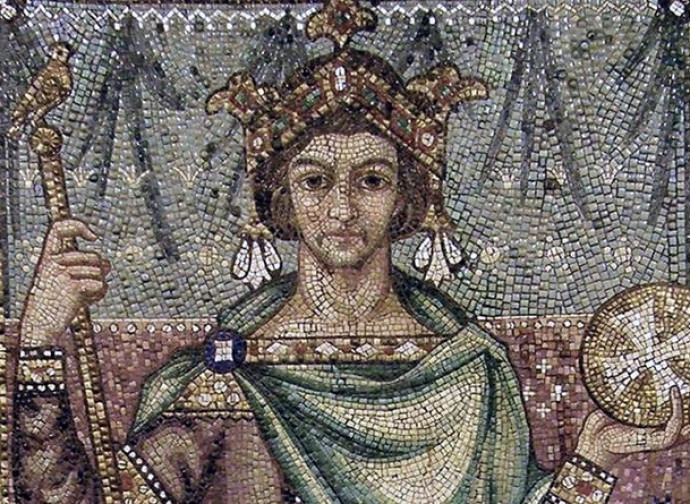Saint Henry II
mperor of the Holy Roman Empire and king of Italy, Saint Henry II (c. 973-1024) was a great political actor of his time. Together with his wife, Saint Cunigunde (c. 978-1039), he promoted the building of churches and monasteries and contributed to the renewal of the Church.

Emperor of the Holy Roman Empire and king of Italy, Saint Henry II (c. 973-1024) was a great political actor of his time. Together with his wife, Saint Cunigunde (c. 978-1039), he promoted the building of churches and monasteries and contributed to the renewal of the Church.
The last exponent of the Ottonian dynasty, he lived most of his childhood without his father, Henry II of Bavaria, known as the Wrangler or the Quarrelsome, exiled by his cousin Otto II. Henry was educated in the faith by Saint Wolfgang, Bishop of Regensburg, who worked to transmit to him Christian devotion and virtues. Good examples were not lacking in his family. His great-grandmother was Saint Mathilde of Germany (c. 895-968), of whom he had a biography written and who had Otto the Great and Saint Bruno among her children. His brother Bruno (c. 992-1029) became bishop of Augsburg. His sister Gisela of Bavaria (c. 980-1065) was a blessed woman, who married the famous Saint Stephen of Hungary, a pivotal ruler for the Christianization of the Magyar land.
Henry derived great spiritual benefit from his marriage to Cunigunde, whom he married in 999, by whom he had no children. This circumstance led to the spread, towards the end of the 11th century, of the story that the two had lived a marriage like that of St Joseph, that is, consecrated to virginity. But some sources contemporary to the two spouses, such as the monk Rodulfus Glaber (‘the Smooth’ or ‘the Bald’) and Bishop Thietmar of Merseburg, attribute the fact to the sterility of Cunigunde. For Germanic law he could have repudiated her, as several sovereigns used to do in the absence of heirs, but Henry refused to resort to this custom. In fact, he wanted to share his life with his wife, an element that probably contributed to spreading his reputation for holiness. Thietmar reported that Henry, during the 1007 synod in Frankfurt, said these words: “For my divine reward, I have chosen Christ as my heir, for I no longer have any hope of having a descendant”.
On the political front he sought above all to consolidate power in Germany, of which he had become king in 1002. He was involved in several war campaigns against Boleslaw I of Poland, the first Polish king to be baptized at birth (his father was Mieszko I, who had received Baptism in 966, a historic date for Christianity in those lands). For this clash with a Christian sovereign, he received harsh criticism from Saint Bruno (aka Boniface) of Querfurt, who was seeking support for the missions in Eastern Europe.
Henry had to go south to Italy for the first time in 1004 to quell the rebellion of Arduin of Ivrea, who had been elected king by some vassals hostile to the empire. And he returned with Cunigunde in 1014, when he was crowned emperor by Benedict VIII. In those days a synod was held in Rome and the saint asked and obtained from the pontiff to include the recitation of the Creed, including the Filioque (whose liturgical use had begun around the 8th century and was gradually taking root), in all the festive Masses and other special celebrations.
In the following years Henry consolidated his alliance with the Church. Together with Benedict VIII (forerunner of the vast ecclesial reform that would later take the name of Gregorian Reform) he presided over the Council of Pavia in 1022, which issued seven canons against the concubinage of priests and for the defence of ecclesiastical property. He greatly admired the sanctity of Odilo of Cluny (c. 962-1049), who advised him several times and when Henry died had Masses celebrated in his suffrage. Among the merits of Henry and Cunigunde we should also remember the foundation of the Cathedral of Bamberg (the first stone was laid in 1004), which became an episcopal see. And it is for this reason that the two married saints (he was canonized in 1146 by Blessed Eugene III, she in 1200 by Innocent III) are often depicted in the act of holding the cathedral together. Saint Pius X proclaimed him patron saint of Benedictine oblates.




